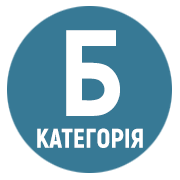CREATIVE FRAMES IN THE SPHERA OF CONCEPTUAL STANDARDS
DOI:
https://doi.org/10.32782/psy-visnyk/2021.1.4Keywords:
conceptual standards, definitions, educational activityAbstract
The article considers one of the subject areas of educational activity in universities, where the phenomenon of creativity has significant limitations - the scope of conceptual standards for constructing definitions of concepts that are created on the basis of mandatory compliance with logical, logistical and paradigmatic rules and regulations. In universities, where the process of mastering scientific knowledge predominates in work with students, there are subject areas in which the phenomenon of creativity is significantly limited and even banned. For example, the variety of definitions of the concept of the same mental phenomenon – thinking or emotions, personality, abilities, etc., which occurs in textbooks, manuals, dictionaries, etc., may, at first glance, indicate the presence of elements of a creative approach of different authors to construct such definitions. But in fact such a variety of definitions is a manifestation of the lack of their authors of certain ideas about the rules and regulations for constructing correct definitions of psychological concepts that have the status of conceptual standards.
References
Кондаков М.И. Логический словарь-справочник. Москва : Наука, 1976. 720 с.
Гаджинский А.М. Логистика : учебник. 14-е изд. Москва, 2007. 472 с.
Гарден Ж.-К. Теоретическая археология. Москва : Прогресс, 1983. 296 с.
Ноэль Мулуд. Анализ и смысл. Москва : Прогресс, 1979. 348 с.
Войшвилло Е.К., Дегтярев М.Г. Логика : учеб. для студ. высш. учеб. завед. / Москва : Владосс-Пресс, 2001. 528 с.
Кун Т. Структура научных революций : пер. с англ. Москва : АСТ : Ер- мак, 2003. 365 с.







